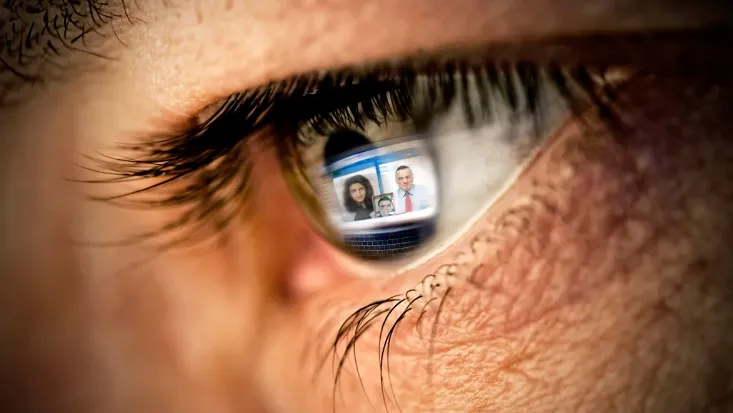Screens & Your Eyes: A Guide to Maintaining Healthy Vision in the Digital World

Contents
Key Takeaways:
- Extended periods in front of screens can cause digital eye strain, with symptoms including headaches, blurred vision, and eye dryness.
- Blue light from screens can disrupt sleep patterns, though proper screen use habits mitigate the impact on eye health.
- Protective measures like screen filters, proper eye care routines, and regular breaks are crucial for preserving eye health in the digital age.
The Connection Between Screen Time and Vision Strain
In this digital era, our lives are intricately intertwined with screens, from the smartphone we check first thing in the morning to the computer monitor we spend hours in front of at work. Unfortunately, this constant exposure to digital displays can substantially negatively impact our ocular health, leading to what’s increasingly recognized as digital eye strain. This condition, characterized by eye fatigue, dryness, and irritation, is becoming more prevalent due to our growing screen time.
When we focus on screens for prolonged periods, the blink rate is significantly reduced, resulting in drier eyes. There are specialized treatments available to soothe such discomfort. For those seeking solutions, one can find relief with dry eye treatments tailored to address these specific symptoms. It’s important to note that adults, children, and teenagers are also at risk as their screen consumption grows with technology integration into education and social interaction.
Scientific Findings on Blue Light Exposure
Blue light, which digital screens emit in significant amounts, isn’t all bad—it regulates our sleep and wake cycles, thereby influencing our overall well-being. However, exposure to this particular wavelength during the evening disrupts these cycles by interfering with our body’s natural melatonin production, a hormone crucial for sleep. A particular concern is the aftermath effect on our eyes after sundown, when blue light can trick the brain into thinking it is still daylight, thus reducing the quality and duration of sleep.
Research is delving into the long-term implications of blue light exposure on our eyes, and some studies signal that retinal cells have a destructive potential. This cellular damage could predispose individuals to conditions like macular degeneration over time.
Protective Measures for Healthy Vision
It’s not just the volume of screen time that matters but also how we interact with our devices. It is prudent to employ several defensive strategies to curb the negative effects of prolonged screen use. Among these is calibrating your displays’ brightness and contrast settings to reduce glare and make text easier to read. Moreover, keeping screens at a safe distance, ideally at arm’s length and slightly below eye level, minimizes the strain on your eyes.
Creating an ergonomically sound workspace is another critical step toward safeguarding one’s vision. This includes adjusting your seating to maintain a comfortable posture, positioning the screen to avoid reflections from windows or bright lights, and considering matte screen filters to reduce glare that can contribute to eye strain. Encouragingly, technological advancements have resulted in screens and coatings designed to limit blue light exposure.
Debunking Myths: Does Screen Time Cause Permanent Damage?
Concerns over screen time have birthed various myths about its long-term impact on our eyesight. One such myth is the belief that excessive screen usage leads to permanent eye damage. While eyestrain can certainly cause immediate discomfort, many eye care professionals agree that screens are not inherently damaging in a way that leads to permanent visual loss. That said, it’s crucial to maintain proper hygienic practices when using digital devices to minimize any adverse effects.

